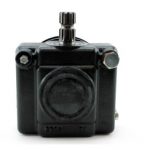 Insects can be a terror to deal with when it comes to the lawn and garden, but often one of the biggest troubles from insects is hard to spot. The young larva of beetles, often referred to as grubs, are an invisible infestation that you will rarely see out in the open.
Insects can be a terror to deal with when it comes to the lawn and garden, but often one of the biggest troubles from insects is hard to spot. The young larva of beetles, often referred to as grubs, are an invisible infestation that you will rarely see out in the open.
Grubs bring trouble two different ways. The first is due to their feeding habits. Grubs like to eat the tender roots of grass, causing the grass to turn brown and to be easily pulled out of the ground. By the time you notice this, it will already be a bit late to save those patches of grass, but not too late to curb the problem and keep them out of other areas of your lawn.
The second way grubs will ruin your lawn is because, to many predators, they are a tasty little treat. Skunks, raccoons, and various birds will dig into your lawn to get to the larvae, pulling up chunks of sod.
The good news is that seeing a few grubs is normal – you’ll likely never be rid of them entirely. However, you don’t want to have large groups of them. To figure out how full your lawn is, dig up a square foot of sod in two or three different places. As long as there are five or less grubs per square foot, you won’t have to worry about anything – a lawn can cope with the feeding habits of this small of a population.
If the numbers rise, you’ll have to consider treatment. Five to ten grubs per square foot is tolerable, and whether or not to apply treatment is up to you. Ten or more grubs per square foot puts your lawn in the danger zone, and it means you now need to figure out treatment.
The easiest way to get rid of grubs is through chemicals. Anti-grub chemicals can be purchased at any home store, and you will have a choice of brands and application methods. They will need to be watered into the lawn to be successful, so apply them after a dry spell or after ceasing watering for a little so that your lawn absorbs everything. One major problem with this method is that chemical treatment is not all that great for the environment, nor for your family or pets.
Natural methods are generally safer, but will often be less successful, or at least not as immediate. Milky spore is great against Japanese beetle grubs, but it can take two to three years to start to make a difference, and it only works against Japanese beetle grubs, not against the full range of beetles. Parasitic nematodes are worms that will go after the grubs, eventually killing them. Research the specific nematodes that will work in your region and against the type of grub you have, not all nematodes will act the same – they are living things, after all.
Finally, one method that goes against intuition for a healthy lawn is to stop watering for a long period of time. If you have grass that will go dormant in a long dry spell and be able to recover later, such as bluegrass, you can dry your yard out. Grubs need some moisture, so letting your lawn do dry and the grass go dormant will kill off the grubs.
So keep an eye out for these ugly little critters, and make sure that if you see their number growing, that you take action.






